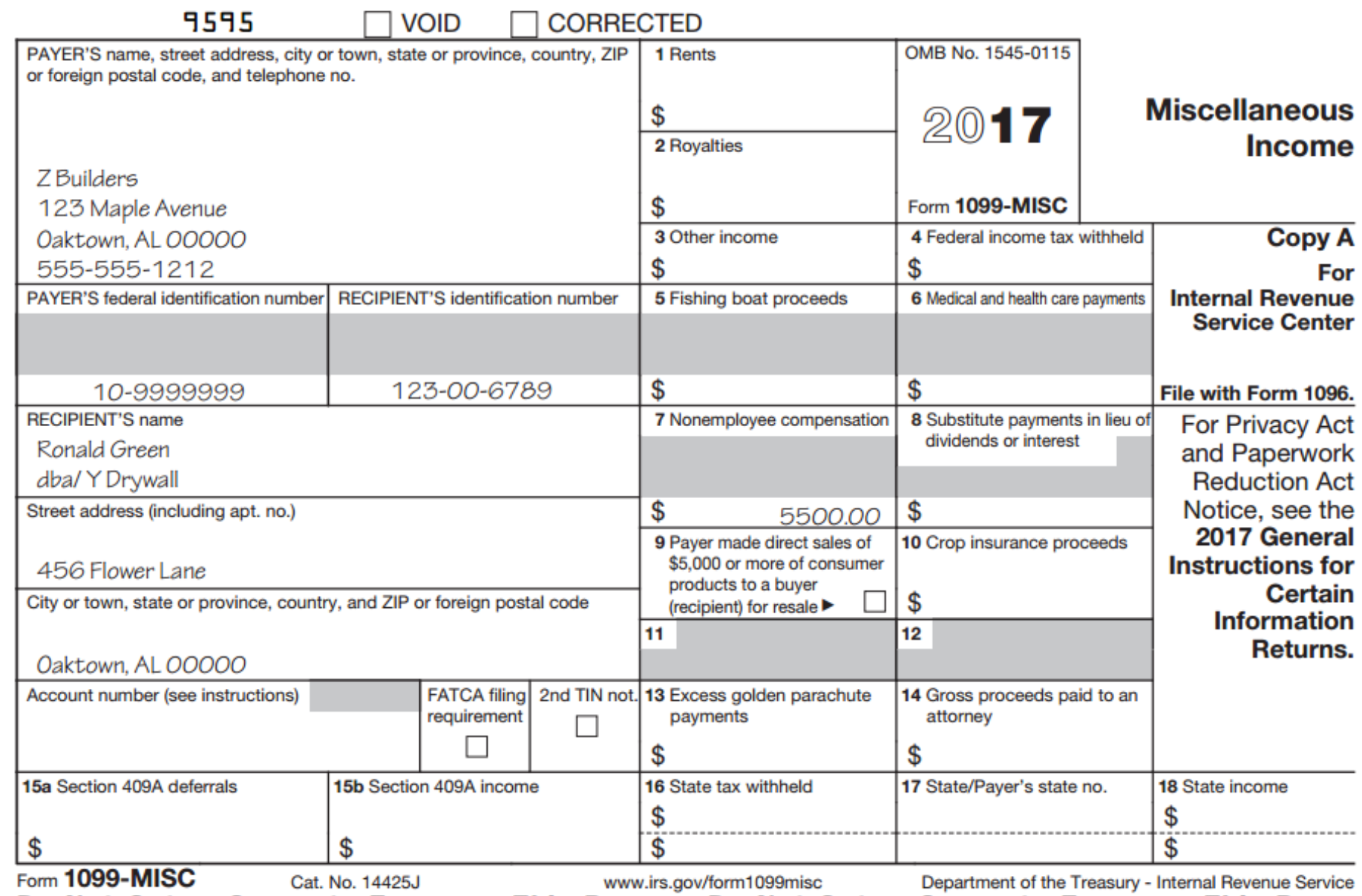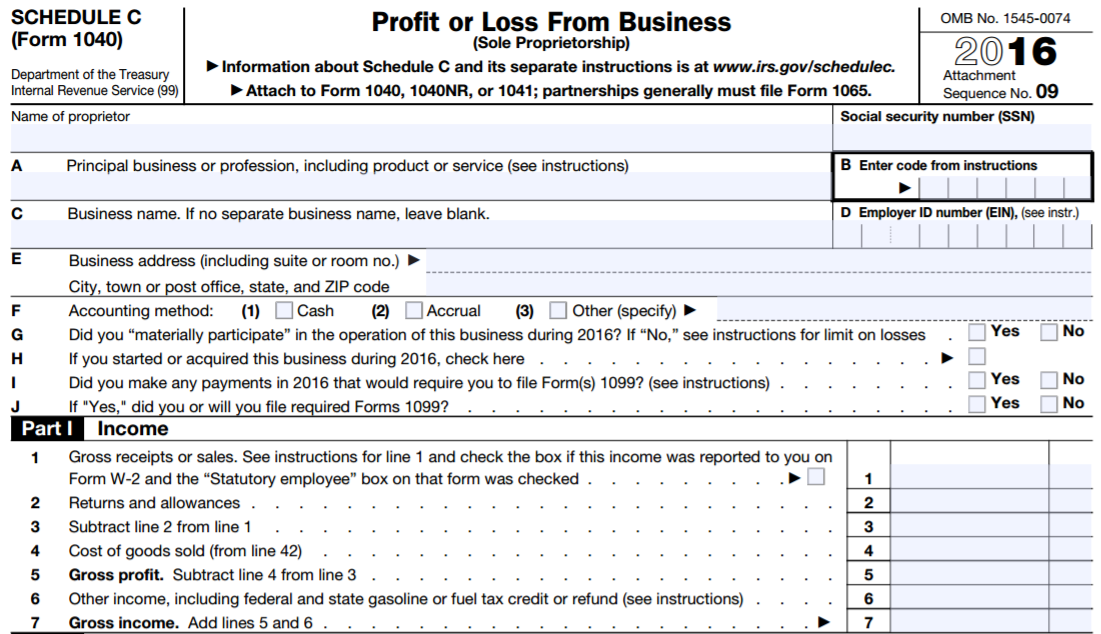Disclaimer: the following information is for educational purposes only. We do not take responsibility for any tax or legal issues or complications that result from your use of the following information. For additional information, consult a tax professional.
Now that the year has drawn to a close, it’s never too early to begin thinking about 1099 forms and starting on your tax returns. Amazon Flex typically begins to send out 1099 forms for the previous year towards the end of January (legally they must mail them out by 1/31), so keep an eye out for them in the mail!
Confused by all of the terms and instructions? Not sure how to fill out Schedule C forms? Keep reading for a tutorial on the entire process!
Overview
- 1099 form and your Amazon Flex earnings
- Filling out Schedule C for your Amazon Flex earnings
- Mileage deduction for your deliveries
- Filling out Schedule SE
- Paying estimated taxes for the upcoming tax year
What is a 1099, and how does it differ from a W-2? Why is Amazon Flex sending this to me?
A 1099 form is a tax form issued by a company (in this case, Amazon Flex) to an individual that is not an employee (you, an Amazon Flex driver), that explains how much was paid in compensation for a service provided during the tax year.
The 1099 form differs from the W-2 form provided by employers to employees, as it is used to report payments provided to independent contractors.
If you earned more than $600 during the previous year, by law, Amazon Flex is required to report the amount that they paid out to you. Once you receive the 1099 form from Amazon Flex, study the reported income amounts and make sure that they match up with what you actually received. The total amount paid to you should be listed in BOX 7. If there is any discrepancy, reach out to Amazon Flex ASAP.
Note that even if you earned less than $600 and do not receive a 1099 form, you are nonetheless required to report your earnings.
Our end goal is to complete Form 1040 – your Individual Tax Return. As an independent contractor, you will use the information on form 1099 from Amazon Flex to complete Schedule C and Schedule SE, which in turn are needed to complete sections of Form 1040 that pertain to your Amazon Flex earnings and tax amounts.
Below is an example 1099 form with total earnings of $5500 noted in BOX 7. The form you receive from Amazon Flex will be in the same format. After you receive it, confirm that all information is correct.

Note that a 1099 is not strictly required for you to complete your tax returns, including Schedule C (see below). Typically there are two possibilities for why you don’t receive a 1099. First, you may not have earned enough during the previous year ($600) to trigger the requirement. Second, a 1099 may have been sent to you but there was an address error or discrepancy.
In either case, it is better that you do not request that one is sent. The reason is that Amazon Flex may accidentally issue a duplicate or erroneous one. In a worst-case scenario, you may end up with an IRS tax bill for TWICE the tax amount, and at best, you will spend lots of extra time clearing this confusion up. In short, you can get in tax trouble if you don’t report income for which there was a 1099 issued, but reporting income for which there is no 1099 issued is OK.
OK, what is Schedule C and what do I do with the 1099 form?
You are probably familiar with form 1040 and reporting your income. As an independent contractor, however, you yourself are a business, and the way in which you report your business earnings is different from reporting your income from an employer. As such, you will need to use IRS form Schedule C to report your business income.
As an independent contractor you are essentially a business, and you are taxed on your profits, not gross income, and Schedule C helps to calculate the taxable profit amount. The results from your Schedule C calculations will then ultimately be written into form 1040 to calculate your final tax liability. See below for what Schedule C looks like:

The majority of the fields to fill out should be relatively straightforward. If in doubt, you can reference the Instructions for Schedule C.
For Amazon Flex, you might fill out the following fields as follows:
Background information: filling out basic information about your business
Line A: “Package delivery services for online retail orders”
Line B: 492000 (Couriers & messengers)
Line C: Unless you have specified a DBA designation when you registered your sole proprietorship, you would likely want to leave this blank.
Line D: Leave this line blank – do not fill out the Amazon Flex federal identification number
Line E: If using your home address, this can be left blank
Line F: Cash
Line G: Yes
Line I, Line J: No, No
Part I: how much did you earn?
Line 1: Write in the amount that is shown on form 1099, BOX 7. Unless you have some unique circumstances, you should have nothing to report on lines 2, 4 and 6, and therefore your GROSS INCOME on Line 7 should equal the amount you wrote in on Line 1.
In reality, you could have filled this out without the 1099 form. Additionally, unlike the W-2, you do not need to submit the 1099 form to the IRS, as this was already submitted by Amazon Flex. You definitely want to double check the BOX 7 amount matches your Amazon Flex app earnings and your actual bank account deposits, but beyond this, you can safely file the 1099 for your records.
Part II: what was the cost of conducting your business?
This is where all the diligent records you kept on the miles you drove during the previous year come in. What we are doing here is estimating the total cost of delivering all the packages during the course of your deliveries in the previous year. To keep things easy, the IRS allows you to use a standardized 54 cents per mile calculation (as of 2016) to calculate the cost, regardless of the actual vehicle make, model or mileage efficiency of the car you drove. This is an estimate that includes all the average costs of operating a vehicle, including gas, depreciation, maintenance, insurance, license fees, etc.
Simply take the total miles you drove each day in the course of completing your Amazon Flex deliveries during the previous year, including the distance to the warehouse from your home, and multiply this by 54 cents (2016) to get the total vehicle costs and write this number in on Line 9.
OPTIONAL: Can I deduct the cost of equipment I purchased for completing my deliveries, like a dolly, food bag or phone charger?
Yes, depending on whether these pieces of equipment would have a “useful life substantially beyond the tax year,” you will want to report this in different locations on Schedule C. If they do not last more than a year, you can report the cost of the equipment on Line 22. If they last longer than a year, things are a bit more complicated with calculating and reporting depreciation amortization of the equipment. This amount should go on Line 13. For further reading, reference section 179 and form 4562.
Lastly, information on your vehicle
Fill out Part IV, “Information on Your Vehicle.” Write in the answers to these questions based on your actual situation – this should be fairly straightforward. Note that driving from your home to the warehouse would not count as commuting, as per the definition on form 2106, line 15.
And, you’re done with Schedule C! You can now fill out Form 1040, Line 12 (business income).
Schedule SE: figuring out your self employment tax
You have now figured out the taxable profits from your Amazon Flex earnings, but to find out the tax amount, you need to fill out Schedule SE. Note that “tips” as described in the flow chart do not apply to the tips you earn from Amazon Flex – your Amazon Flex tips are simply lumped together as compensation for your delivery services performed.
Follow the instructions on the form to calculate the Self-employment tax on Line 5. This number should also be entered into Form 1040, Line 57.
Keep records of your expenses
You have now filled out all the necessary paperwork pertaining to your Amazon Flex earnings! You are not required to submit details on your vehicle costs but you should safely keep these records in case of an audit or request for such documentation.
Estimated Tax
If this is your first year driving for Amazon Flex, you have likely not been paying estimated taxes as it was not required. If you are continuing to drive for Amazon Flex this year, and expect to owe at least $1000 for this year’s taxes, you must make quarterly payments during the year on or around 4/15, 6/15, 9/15 and 1/15. See form 1040 ES for additional details. You will need to be aware of this and have enough of your Amazon Flex earnings saved so that you can make these tax payments on time.
The reason for this goes back to the differentiation drawn at the beginning of this article between W-2 and form 1099 workers. W-2 employees typically have a part of their salary withheld automatically by the employer, who then directly pays the IRS and state governments. This is why many salaried employees will owe little or even receive a tax refund in April. As a 1099 independent contractor, however, Amazon Flex pays the full amount of your compensation, and it is your responsibility to submit these taxes on your own. Be sure to have enough cash in your checking or savings account to submit annual and estimated taxes!
Be aware that you will need to submit two payments on 4/15 – one for the previous year’s taxes, and another for the current year’s estimated taxes.
State income taxes
Depending on the state you live in, your state government will have different rules and regulations on reporting and paying independent contractor taxes. Many will follow the IRS format, which will allow you to use the same numbers and calculations. Estimated taxes are often required in the same way. Although the overall process is similar, do be aware of minor differences, though, and when in doubt, consult a tax professional!